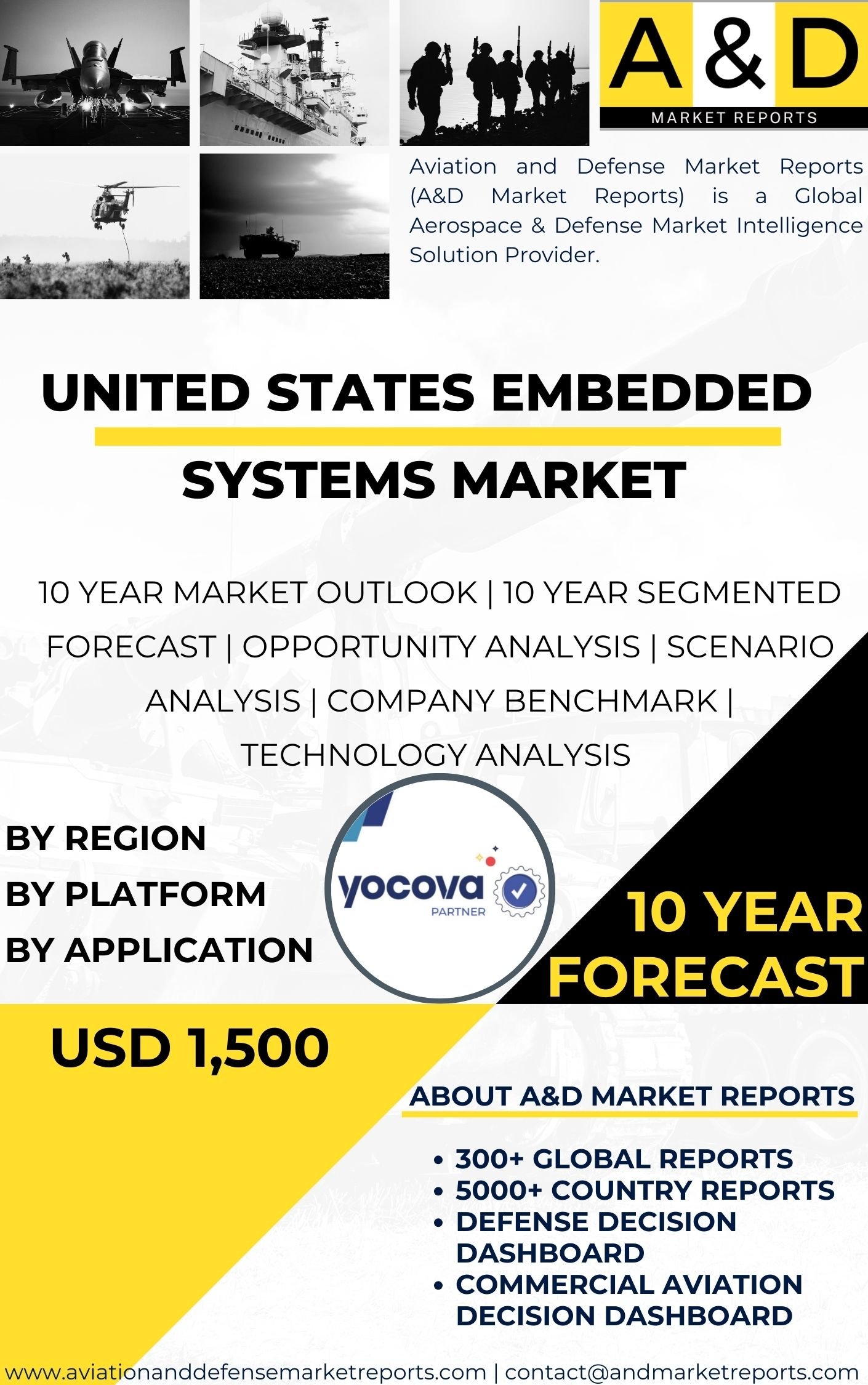Description
The United States Embedded Systems Market is a dynamic and rapidly evolving sector that plays a crucial role in various industries, including aerospace, defense, automotive, healthcare, telecommunications, and consumer electronics. Embedded systems are specialized computing systems integrated into larger products or systems to perform specific tasks or functions. These systems are designed to operate seamlessly with minimal human intervention, offering enhanced efficiency, reliability, and performance in a wide range of applications.
The U.S. embedded systems market has experienced significant growth over the years, driven by advancements in microelectronics, communications, and software development. The increasing demand for intelligent and connected devices, along with the proliferation of the Internet of Things (IoT), has further accelerated the adoption of embedded systems in diverse industries.
One of the key drivers of the U.S. embedded systems market is the rising demand for smart and connected devices. From smartphones and smartwatches to smart home appliances and industrial automation systems, embedded systems enable the seamless integration of software, sensors, and communication technologies, making these devices smarter and more efficient.
The defense and aerospace sectors are major contributors to the U.S. embedded systems market. In defense applications, embedded systems are used in avionics, communication systems, radar systems, and unmanned aerial vehicles (UAVs). In aerospace, embedded systems are critical for flight control, navigation, and monitoring systems. The increasing adoption of unmanned systems and the development of autonomous vehicles further contribute to the growth of the embedded systems market in these industries.
The automotive industry is another significant player in the U.S. embedded systems market. Modern vehicles are equipped with a wide array of embedded systems, including engine control units, infotainment systems, advanced driver-assistance systems (ADAS), and in-car communication systems. These embedded systems enhance vehicle performance, safety, and connectivity, driving the demand for innovative solutions in the automotive sector.
Healthcare is yet another sector where embedded systems play a crucial role. Medical devices, such as pacemakers, insulin pumps, and patient monitoring systems, rely on embedded systems for accurate and real-time data processing. The integration of embedded systems in healthcare not only improves patient outcomes but also enhances the efficiency of medical professionals and healthcare facilities.
The telecommunications industry also heavily relies on embedded systems to power networking equipment, modems, routers, and mobile devices. As the demand for high-speed and reliable communication grows, the need for advanced embedded systems to support telecommunications infrastructure increases as well.
The consumer electronics sector is one of the most significant contributors to the U.S. embedded systems market. Smartphones, tablets, smart TVs, wearables, and smart home devices all heavily depend on embedded systems to provide advanced functionalities, user interfaces, and connectivity.
The U.S. embedded systems market benefits from a robust ecosystem of technology companies, research institutions, and government support for innovation and development. The country’s strong emphasis on research and development, coupled with a favorable business environment, has attracted numerous companies to invest in the embedded systems market.
Advancements in semiconductor technology have also played a crucial role in shaping the U.S. embedded systems market. The miniaturization of components, increased processing power, and reduced power consumption have enabled the development of more sophisticated and energy-efficient embedded systems.
Security and reliability are critical concerns in the embedded systems market. As embedded systems become increasingly interconnected and integrated into critical infrastructure, the need to protect against cyber threats and ensure system integrity becomes paramount. The U.S. government and industry stakeholders are investing in robust cybersecurity measures to safeguard embedded systems from potential attacks.
Moreover, the demand for long product lifecycles and system stability poses challenges for embedded system developers. Many embedded systems are used in applications with long development cycles and operational lifespans. As a result, developers need to ensure that embedded systems remain functional, secure, and upgradable throughout their extended lifecycles.
The U.S. embedded systems market is witnessing a shift towards open-source software and hardware platforms. Open-source solutions offer greater flexibility, cost-effectiveness, and collaboration opportunities, enabling developers to create tailored solutions for specific applications.
The ongoing convergence of embedded systems with AI (Artificial Intelligence) and ML (Machine Learning) technologies further enhances the capabilities of embedded systems. AI-enabled embedded systems enable real-time data analysis, predictive maintenance, and intelligent decision-making, unlocking new possibilities across industries.
As the U.S. embedded systems market continues to grow, the industry faces challenges related to talent acquisition and skill development. The demand for engineers and professionals with expertise in embedded systems design, software development, cybersecurity, and AI is steadily increasing. Addressing this skills gap is essential for sustaining the growth and competitiveness of the embedded systems market.
In conclusion, the U.S. embedded systems market is a dynamic and expanding sector that drives innovation and technological advancements across industries. The increasing demand for smart and connected devices, along with the rise of IoT, is fueling the adoption of embedded systems in diverse applications, ranging from defense and aerospace to automotive, healthcare, telecommunications, and consumer electronics.
The U.S. government’s emphasis on research and development, coupled with a favorable business environment, fosters a robust ecosystem of technology companies and research institutions, driving the continuous evolution of embedded systems.
However, the industry faces challenges related to cybersecurity, system reliability, talent acquisition, and the convergence of embedded systems with AI and ML technologies. Addressing these challenges will be crucial in sustaining the growth and competitiveness of the U.S. embedded systems market in an increasingly interconnected and technologically-driven world.




